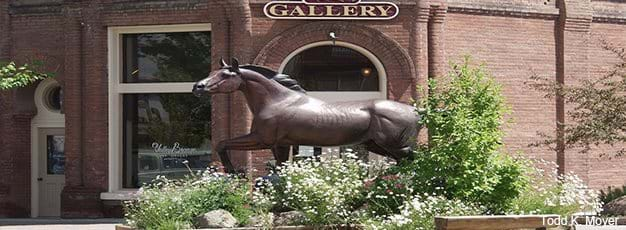Arts Employment Is Burgeoning in Some Rural Areas

The “art scene” is commonly associated with the largest cities, like New York, Los Angeles, and San Francisco. Indeed, arts employment is high in these and other major U.S. cities. However, ERS research confirms that, increasingly, the arts are concentrating in other, less populated areas throughout the country, including small, completely rural counties. The emergence of these nontraditional arts magnets, especially since 1990, demonstrates the ability of some rural areas to attract creative talent and is related to the growing number of initiatives promoting rural cultural tourism.
As nonmetro arts employment figures continue to rise, development strategies to promote rural arts and related tourism are increasing in number. The concentration of artists in a relatively small number of places suggests that successful strategies will not be widespread. The single characteristic most strongly associated with rural arts magnets in 1990 and 2000 was the ability to retain college-educated workers.
Information on county-level employment in the arts is available every 10 years in the Census of Population. The arts employment share consists of “art and design workers” and “entertainers and performers, sports and related workers.” (The two categories include some workers not engaged in artistic pursuits (such as athletes and industrial designers), but they make up a small share of arts employment, and are very rare in nonmetro areas.) The Census data support the widely held view that, on average, artists tend to locate in central cities of the largest U.S. metro areas and are least prevalent in completely rural counties.
However, the Census data also show that metro and nonmetro areas as a whole experienced robust growth in arts employment. Growth was fastest in rural areas not adjacent to cities, The nonmetro growth in arts employment did not occur uniformly across the United States, but was concentrated in select counties.
In 1990, concentrations of artists in nonmetro counties were strongly associated with natural amenities in the Mountain West and the Northeast. Nonmetro counties with the highest shares of arts employment in 1990 included Nantucket, MA; Pitkin (containing Aspen), CO; and Teton, WY. In the 2000 data, several counties in the Texas Hill Country (Gillespie and Llano) had high arts employment shares, along with nonmetro counties in the Great Plains (Riley, KS), Midwest (Decatur, IA, and Bayfield, WI) and Southeast (Lincoln, GA, Oktibbeha, MS, and Mitchell, NC). Most of these counties offered considerable tourism and recreation activities or housed a large college-going and college-educated population.
Creative Class County Codes, USDA, Economic Research Service, September 2023
The Emergence of Rural Artistic Havens: A First Look, Agricultural and Resource Economics Review, April 2007, 36:1.


